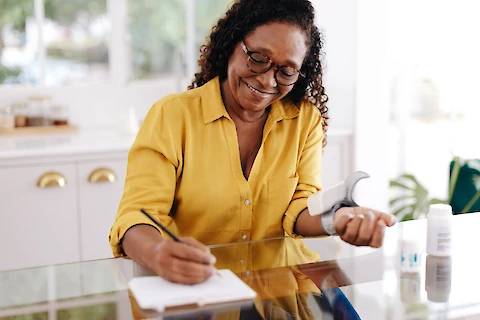
February marks American Heart Month, a time to emphasize the importance of heart health, particularly in our senior population. For caregivers who are not trained medical professionals but are managing the health of a senior loved one, understanding and monitoring blood pressure is crucial. High or low blood pressure in seniors can be a silent indicator of other health problems, and properly managing it can significantly improve their quality of life.
What Is Blood Pressure?
Blood pressure is the force exerted by your blood against the walls of your arteries as your heart pumps. It is recorded as two numbers: the systolic and the diastolic pressure. The systolic pressure represents the force exerted when your heart beats, while the diastolic pressure measures the force when your heart is at rest between beats. For seniors, maintaining normal blood pressure is crucial as it can indicate the functioning of the cardiovascular system and hint at potential health problems.
Tips to Measure a Senior’s Blood Pressure Correctly
Measuring blood pressure requires a device known as a sphygmomanometer, also referred to as a blood pressure cuff, and a stethoscope. Most home users today prefer digital monitors for their ease of use. To get an accurate reading, ensure your senior loved one is relaxed and seated comfortably. The arm should be at heart level and still. Wrap the cuff snugly around the upper arm, making sure it's not too tight or too loose. Follow the instructions provided by the monitor manufacturer and record the reading.
Accuracy is crucial when checking blood pressure. To ensure you get the most accurate readings, avoid any strenuous activity or caffeine at least 30 minutes before the measurement. Additionally, multiple readings at different times of the day can help provide a more comprehensive understanding of a senior's blood pressure levels.
Interpreting Blood Pressure Readings
Once you have the readings, it's important to understand what they mean. Normal blood pressure is generally around 120/80 mm Hg. High blood pressure, or hypertension, is typically defined as a reading of 130/80 mm Hg or above on a consistent basis, while low blood pressure, or hypotension, is a reading lower than 90/60 mm Hg.
What to Do With the Information
If a senior's blood pressure is consistently high or low, it's crucial to seek immediate medical attention. This is not a situation to be self-managed without professional expertise. Along with taking prescribed medication, lifestyle changes such as reducing salt intake, increasing physical activity, managing stress, and maintaining a healthy weight can help manage blood pressure levels.
Caregivers play a pivotal role in managing a senior's blood pressure. Regular monitoring, encouraging a healthy lifestyle, and ensuring medication is taken as prescribed can significantly contribute to maintaining healthy blood pressure levels in seniors.
Senior Helpers New York City Supports Seniors and Their Families
Monitoring and accurately measuring blood pressure is an essential aspect of senior care. It provides a glimpse into their cardiovascular health and can be a key indicator of potential health risks. As caregivers, understanding how to measure and interpret these readings can significantly enhance the care you provide to your senior loved ones.
If you're in Manhattan, Bronx, Brooklyn, or Queens and need assistance with senior care, don't hesitate to reach out to us at Senior Helpers New York City. Our team of professionals is dedicated to providing the best care and support to simplify your caregiving journey. Contact us today to learn more about our services and how we can assist you.